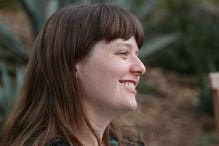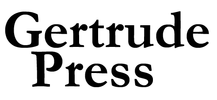Naked:
The Rhythm and Groove of It. The Depth and Length to It.
|
In writing Naked, Nastashia Minto has formed a unique combination of genres: memoir and poetry—slam mixed with prose—attached to explorations of race and queerness. The collection performs a total self-exposure, from childhood to the present day, and everything about it demonstrates that starting with herself as subject is the best way for Minto to proceed as a poet. Her nakedness is compelling on its own merits, and she brings the reader into her body and mind effectively. Minto’s voice deserves to be heard; she is a queer black poet with a terribly sad story. However, her aesthetic is still maturing, and as a poet whose work has a distinctly aural rhythm, she suffers on the printed page. Naked is promising, but flawed.
Mainly, it’s difficult for slam poetry to have the same power when read as it does when heard. Minto’s internal rhymes are intriguing, and her subjects are weighty and complex. But the poetry is arranged in paragraphs that don’t bring the same kind of vocal emphasis to the words as a performance does, which means you wind up with something like this on the page (from “Growing Pains”): “How could we be with someone who doesn’t like growth or denies it? Gravity confines it, and they use that to fight it. Inspiration lights it, hope guides it, but they still feel broken. Not knowing that they’re already chosen.” With effort, the reader can use her ear on these lines. Without that effort, the rhymes sound corny, and the prose, tripped up by abstraction, falls flat. Minto’s internal rhymes are intriguing, and her subjects are weighty and complex. The same goes for repetition: powerful in performance, difficult on the page. Poems like “Mother May I,” “He Walks—I Stand,” and “You,” all punctuated by repeated lines and words, are tiresome to read where they would be impactful on stage. None of this is Minto’s fault, and it demonstrates the difficulty of translating an inherently oral form to the written word. Perhaps part of the book’s subtitle (The Rhythm and Groove of It) derives from Minto’s awareness that it’s easier to appreciate her with the ear than with the eye.
|
Minto’s nakedness is compelling on its own merits, and she brings the reader into her body and mind... Some of what Minto writes about is universal—finding a place in the world, dealing with heartbreak, feeling despair and loneliness—and her frequent use of abstractions gives the work an unfortunately anonymous feel. But when she sticks to unrhymed prose, the results can be remarkable. From “Hanging Ropes,” which compares lynching to Jesus’s crucifixion and Judas’s suicide: “Then a cluster of birds flies from her belly into the shadows, and they all become humans and climb the hanging ropes.” Compared to her slam poetry and the regular poems, her prose uses fewer abstractions and more unique details.
It isn’t until the final section of the book that her work seems fully mature and entirely her own. She writes phenomenally well about sex. “B-flat” combines music with sensuality (and returns to internal rhymes): “I stroke the keys of your breast; your chest rises and falls to the beat. The small moans come in E minor played so beautiful. My hands move down your pants, slowly transition to G—I see, you like that chord to be strummed…we lay in place to enjoy this melody we just made.” The poem closes with a sexy, humorous moment: “Your lips, my lips, my hands, your hips, and you turn on your knees and arch your back and say, ‘Now can you play a B-flat like that?’” The purpose of Naked, according to the author’s introduction to the book, is to “open up the conversation so that we can express and embrace our bodies, our emotional needs, our sexual preferences, our sexual needs and desires.” This is an ambitious intention for a debut collection of hybrid poetry. In reality, Naked is the individual testament of a body and a mind experiencing a beautiful, unkind world. If Minto isn’t quite ready, as a poet, to converse with all the other bodies testifying to their experiences, her first effort indicates that, one day, she will be. |

REVIEWED BY KATHARINE COLDIRON
Katharine Coldiron’s work has appeared in Ms., The Guardian, VIDA, The Los Angeles Review of Books, and elsewhere. She lives in California and at kcoldiron.com.
REVIEWED BY KATHARINE COLDIRON
Katharine Coldiron’s work has appeared in Ms., The Guardian, VIDA, The Los Angeles Review of Books, and elsewhere. She lives in California and at kcoldiron.com.
